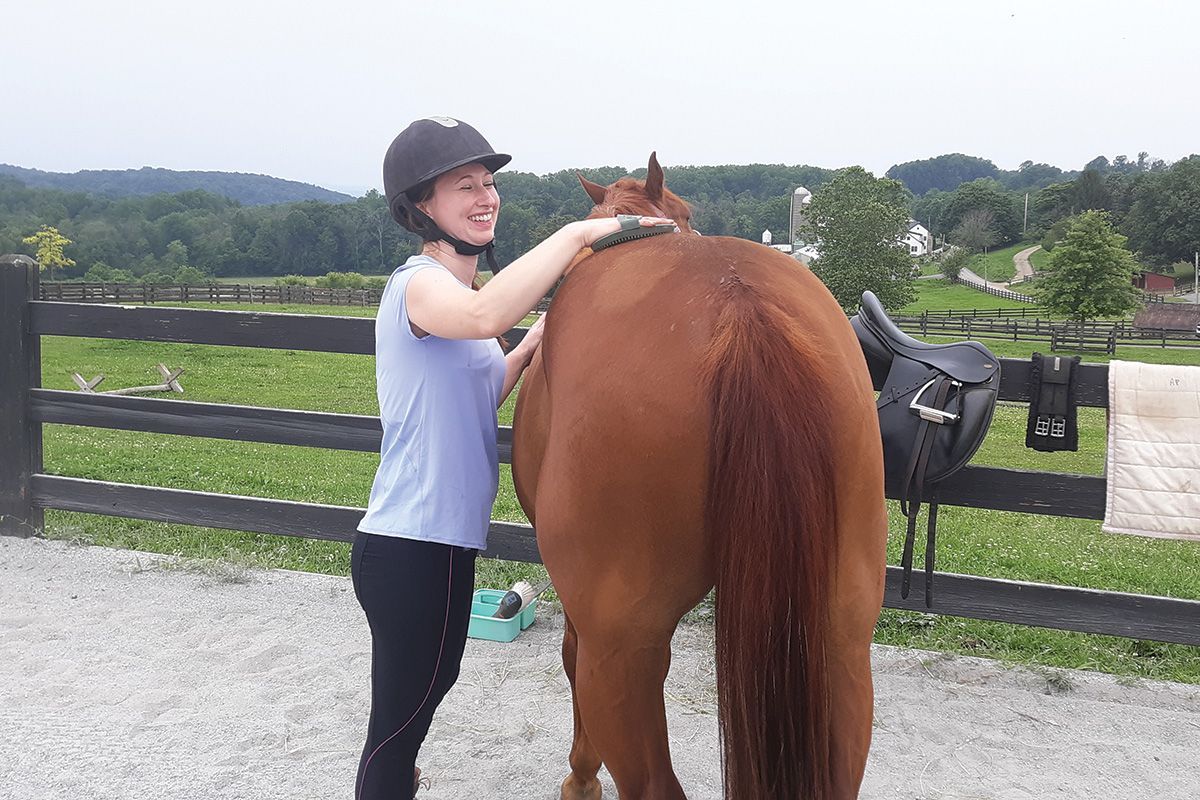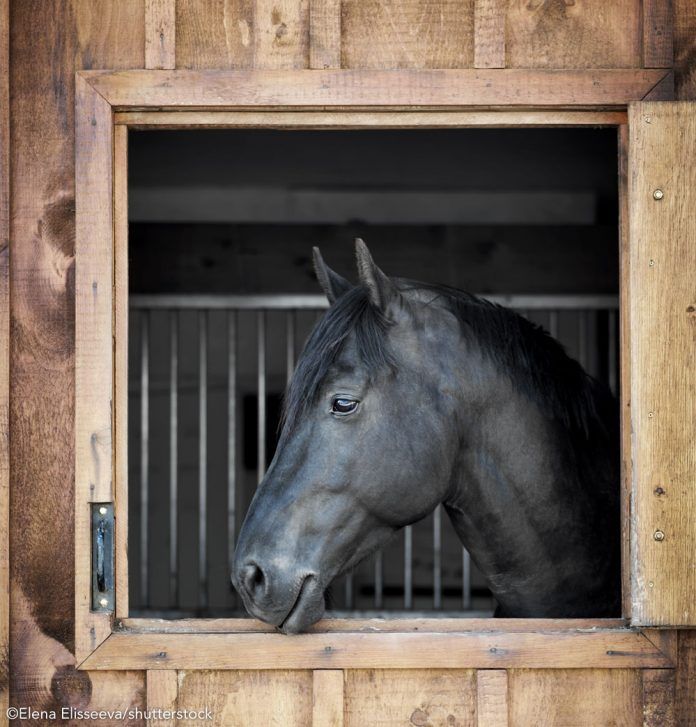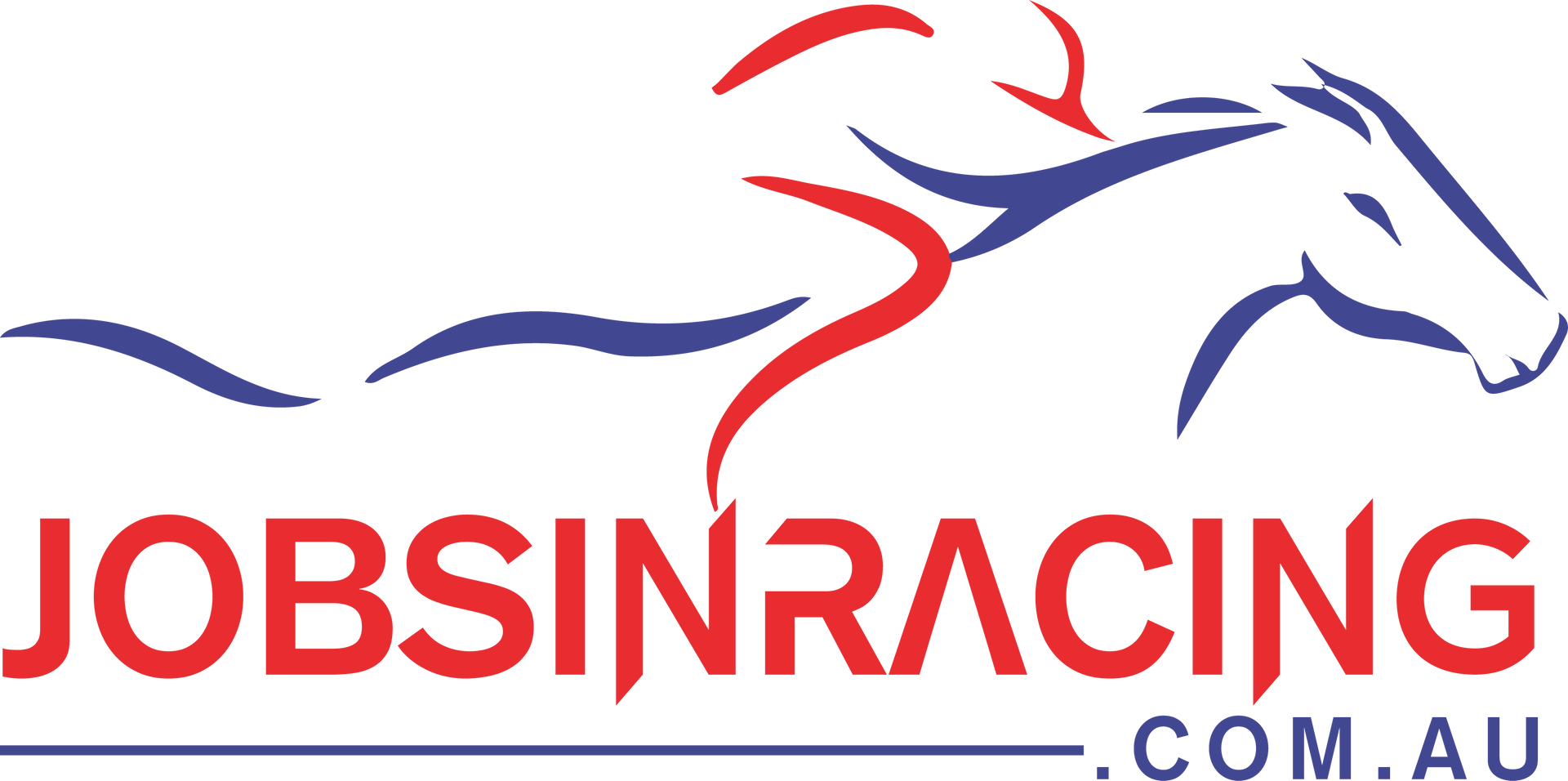Horse health checklist: What is your horse's normal?
As a horse owner, it is important to understand the normal signs of a healthy horse, as well as what to look out for in order to maintain a horse’s overall health. Knowing what is normal and abnormal will help you provide the right equine care and know when you need to call in reinforcements. Read on to learn:
- The signs of a healthy horse
- Symptoms of an unhealthy horse
- How to treat a sick horse
- How to keep your horse healthy
As with any animal, there is a baseline of normal vital signs, physical condition, and behavior when horses are healthy. When a horse shows changes in these baseline indicators, even minor ones, it can indicate that something is wrong. It’s important to learn what is normal and when you should contact a veterinarian.
What are the signs of a healthy horse?
Checking your horse’s behavior and appearance on a daily basis will help you catch signs of illness or injury early. There are normal ranges for temperature, breathing and heart rates, as well as the general appearance and behavior of your horse.
What are the vital signs of a healthy horse?
In veterinary medicine, TPR stands for Temperature, Pulse, and Respiratory rate. These measurements are used during every physical examination. The normal ranges for a horse’s TPR are:
- Temperature, taken rectally: 99°F (37.2°C) to 100.5°F (38°C) at rest
- Pulse: 28 to 40 beats per minute at rest
- Respiration: 8 to 15 breaths per minute at rest, relaxed and regular
You can check your horse’s heart rate by pressing the blood vessel under the cheekbone, on the underside of the jaw, under the tail bone, or inside the pastern. The range of 28 to 40 beats per minute is healthy at rest; keep in mind your horse’s vitals will be higher after exercise.
All horse owners should check their horse’s gum color, skin elasticity, and general appearance on a daily basis to ensure equine wellness. Here are some areas to consider:
- Eyes: Bright and clear with no discharge
- Nose: Clear, breathing normally, with no nasal discharge
- Ears: Alert, light pink in color, with no discharge or skin irritation
- Gums: Pink and moist
- Capillary refill time: One to two seconds after pressing lightly on the gums to measure
- Dehydration skin pinch: Skin bounces back quickly with no tenting
- Gait: Normal, with no limping or stiffness
- Gut sounds: Mild “gurgling” or “tinkling” sounds are present
- Teeth: Smooth with no points, broken teeth, or bad breath
- Coat: Smooth and shiny
- Weight: A healthy body condition
Understanding a horse’s healthy appearance is essential to keeping your horse happy and fit. Alerting a veterinarian when these basic indicators are outside the norm or have changed suddenly will help catch any diseases or conditions early.
How does a healthy horse behave?
You know your horse best, so their personality may be slightly different from the generalized healthy horse's behavior. A healthy horse should be energetic and alert, often eager to socialize with a bright attitude. Standing, trotting, and galloping should be comfortable with weight distributed evenly on all four feet. Your horse should be eating and drinking normally with even bite planes and without favoring either side of their mouth.
With a healthy diet and water intake, your horse’s manure and urine should be normal as well. A healthy horse’s urine may sometimes be pale yellow to clear, but color can vary to different shades with or without some cloudiness. Manure should be soft and easily passed, but intact. A manure score chart may be helpful to identify unhealthy manure.
How do you know if something is wrong with your horse?
By knowing your horse’s healthy baseline, you can catch when something is wrong early. Contact an equine veterinarian if you notice these symptoms:
- A change in behavior, such as energy level or poor performance
- Changes in eating and drinking (too much or too little)
- Diarrhea or stool that is too hard
- Blood in urine or manure
- Weight loss or weight gain
- Gums that are bright red, muddy, or brown in color with slow capillary refill time
- Slow or fast resting heart or respiratory rate
- Tenting in the skin or tacky, dry gums
- Unusual or lack of gastric (gut) sounds
- Change in dental condition, such as broken teeth, pointed teeth, or foul breath
- Temperature too high or low at rest
- Dull skin or hair, or crusty, scabbed skin
- Head shaking or tilting
- Crusty or smelly ears, or ears that are sensitive to the touch
- Stiff or uneven gait
Even a minor change outside of the normal range can indicate something is wrong with your horse. An equine veterinarian can help you determine the underlying cause and help you keep your horse healthy.
How do you treat a sick horse?
“There is no one-size-fits-all treatment for a sick horse,” states Dr. Jo Myers, a veterinarian with Vetster. First, a horse vet must examine your horse before making a diagnosis. This will involve a physical exam and possibly medical tests, such as blood tests or X-rays. Different diseases, conditions, and injuries will require different treatments. Call a veterinarian immediately if your horse’s normal behavior or vitals are drastically outside the normal range or if they have been slightly outside the normal range for more than a few days.
How can I keep my horse healthy?
Even when your horse isn’t sick or injured, regular checkups with your veterinarian are essential to their well-being. Keep your horse’s hooves and body clean and well-groomed. Maintaining pastures to ensure good footing and the regular removal of toxic plants will help prevent injuries and some toxicities. Also, you can prevent the spread of internal parasites with the regular cleaning and removal of manure from stalls and pastures, especially if you have multiple horses.
Regular dental checkups and floating will ensure an even bite plane and prevent changes in eating habits. Provide high-quality food and dry hay for foraging. Finally, providing enough exercise and monitoring your horse’s behavior and body condition score can prevent diseases and conditions such as obesity. Your horse will be much happier and healthier with a close daily inspection of their overall health. You can schedule a virtual appointment with an online vet to discuss your horse’s current health status and any questions you may have about their normal behaviors or vital signs.
FAQ - Horse health checklist: What is your horse's normal?
What are the signs of a sick horse?
A sick horse will have changes in their normal behavior, eating, urination and defecation habits, or vital signs. Close monitoring of your horse’s vitals and behavior will help you catch signs of illness or injury early.
How do I keep my horse healthy?
You can keep your horse healthy by arranging regular health checkups, providing healthy food and forage, maintaining your horse’s barn and pasture, as well as monitoring your horse’s vitals and behavior. Contacting a vet when your horse’s behavior or vital signs change will catch illnesses or injuries early.
What are common horse health problems?
Arthritis, colic, and laminitis are all common diseases and health problems in horses. All can be caught early with daily check-ins with your horse.
Source: https://vetster.com/en/wellness/horse-health-checklist-what-is-your-horse-s-normal


